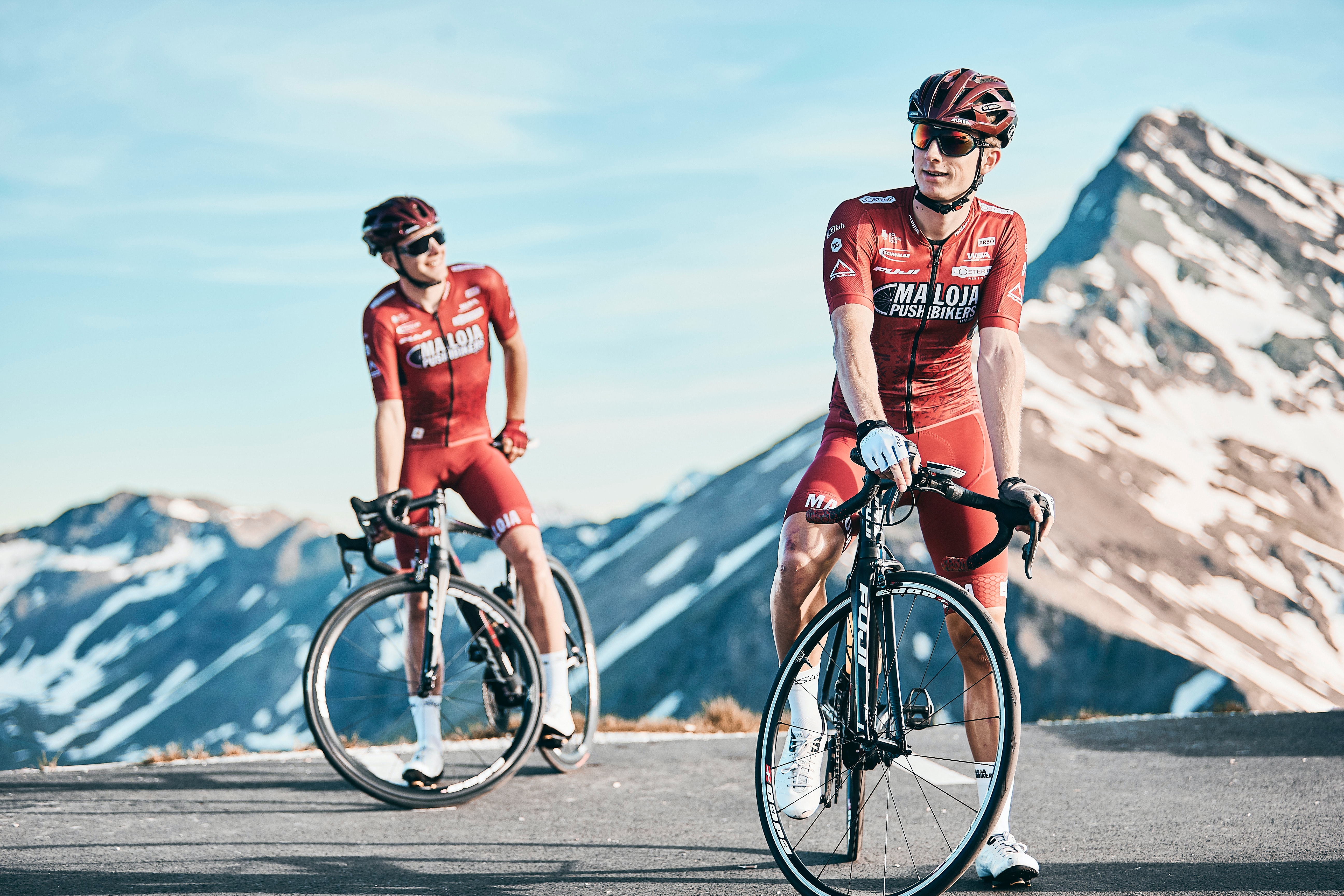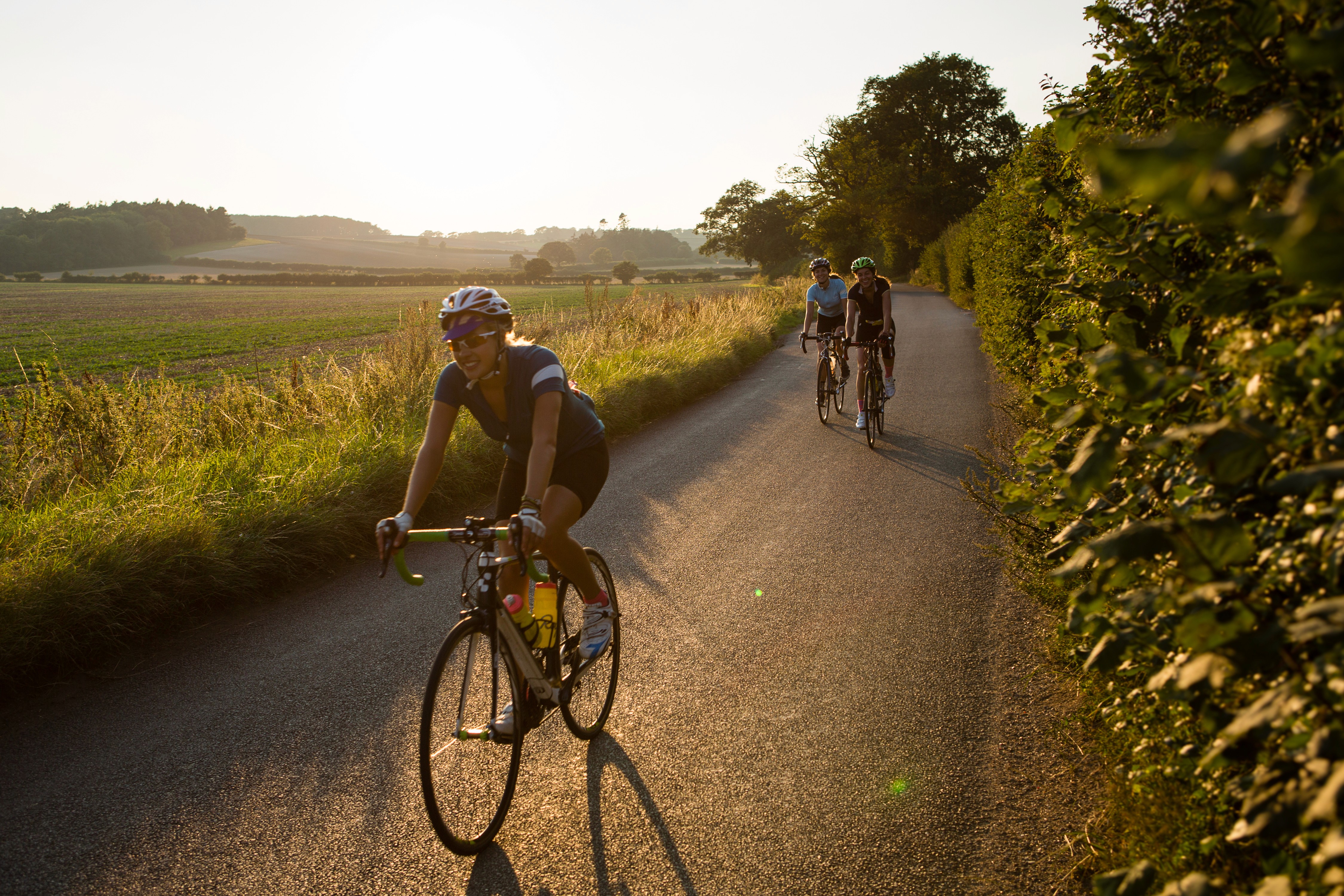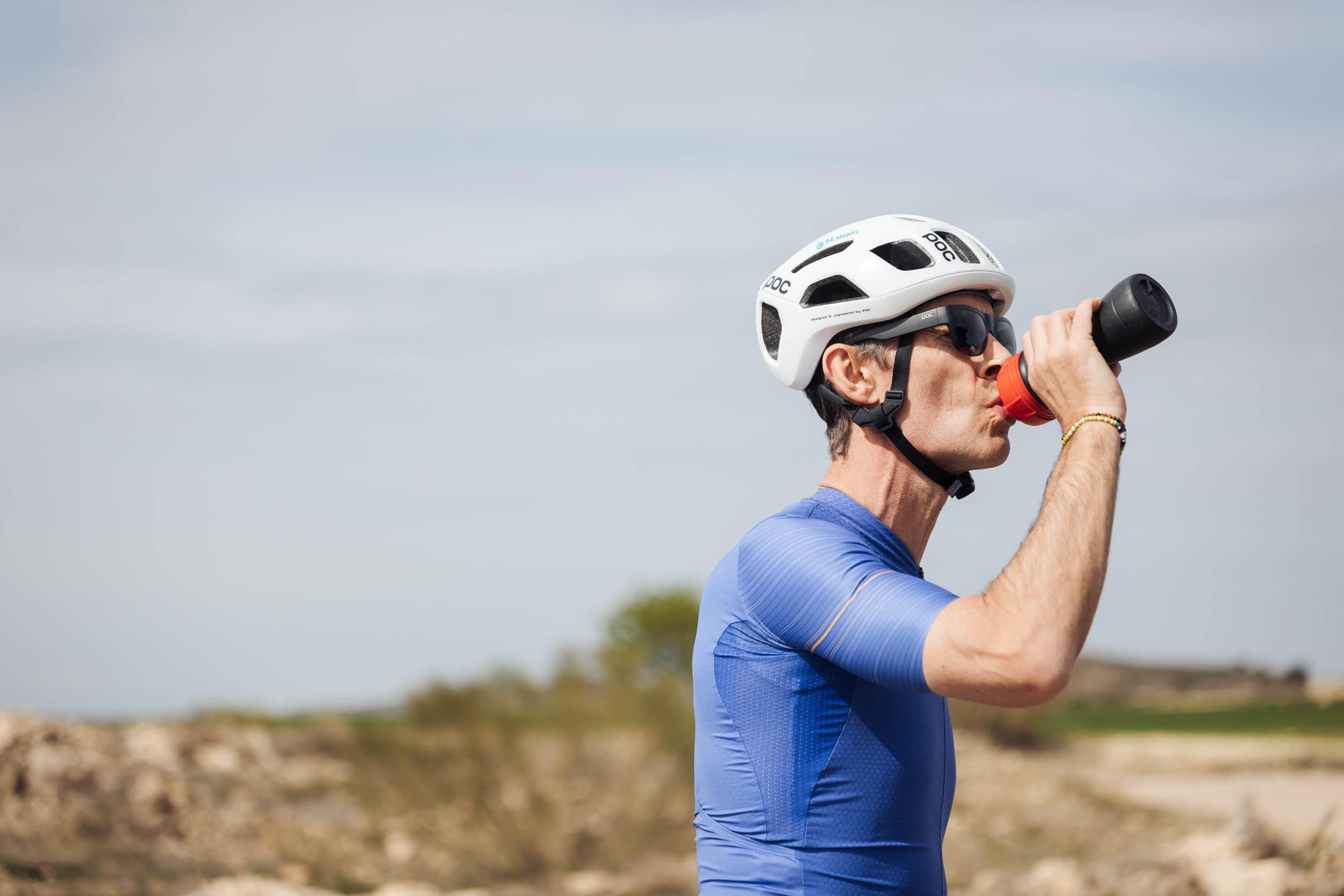The effects of altitude training

Jul 10, 2020

The effects of altitude training
Jul 10, 2020

The effects of altitude training

Jul 10, 2020

Nowadays, every professional bike rider seems to go on an altitude training camp. If we believe the experts, the Tour de France cannot even be won anymore without going on one. What is the effects of altitude training and how big is the performance enhancement? And maybe even more important: what does it bring you as an amateur cyclist?
The principle of altitude training
Let’s start with the physiological effects of altitude training. The human body needs oxygen to function. Oxygen gets in your lungs and into your deepest lung vesicles, where it is absorbed into the blood to be transported to wherever it is needed in the body. Contrary to what often is thought there is not less oxygen at altitude. The percentage of oxygen in the air is 21% at any elevation. However, the air pressure does decrease at altitude, leading to lower oxygen tension in the lungs. The pressure on your deepest lung vesicles to deliver oxygen to the blood is therefore reduced and your body absorbs less oxygen. Of course, this limits performance, but it can also inhibit your normal daily functioning.
Luckily, the body has developed a cure. The human body is able to adapt (acclimatize) to altitude. The immediate adaptations are the increase in breathing and a higher heart rate. For cyclists, this is of little use if you are already at a maximum level of exertion. The longer term adjustments are more interesting, i.e. adjusting the composition of the blood and making muscle cells more efficient. When you are at altitude, the body gives a signal to produce more red blood cells that are responsible for the oxygen transport. It takes a while for this production to ramp up but these effects also remain present for a while, even when you have already descended back down to sea level. The hormone erythropoietin is responsible for this signal and indeed this hormone is better known as EPO.
Altitude training is natural doping
So, in a way, altitude training is natural doping. In addition, a long stay at altitude ensures adaptation at the level of the muscle cell. The density and number of mitochondria (the energy factories in the muscle cell), where energy is converted with the help of oxygen, increases, as does the capillarity of the muscle cells, i.e. they contain more blood vessels and thereby an improved blood circulation.
Decrease of training stimilus
So far a stay at altitude for a grand tour seems all very logical. But there is a catch. The problem at altitude is that even after a long stay and thus maximum acclimatization, the capacity of the body to exercise is reduced. So at altitude you cannot simply train as hard, so the training stimulus is lower. The higher you get, the lower the training stimulus becomes. Therefore, if you stay too high for too long, the body’s adjustments are counteracted by the loss of good training stimuli and your overall performance will deteriorate. As a solution to this problem, the so-called Live High-Train Low principle has been devised. Here the athlete is at altitude for most of the day but he or she trains lower or even at sea level to be able to train at maximum intensity. In science, this form of training has proven to be the most effective, but it requires an enormous logistical operation. This is where the oxygen tent has proven useful. In such a tent, the air pressure is not lowered, but the oxygen content corresponds with a stay at a certain altitude. There are even cyclists that bring their entire bedroom up to a simulated height in this way. The problem is that you have to spend most of the day in your bedroom to achieve the effects. Think at least 14 hours a day and that’s not much fun in your oxygen tent or even your bedroom.
The right altitude
In the end, it’s all about timing and choosing the right altitude. There has been a period when it was thought that some athletes were not suited to altitude training. 1 out of 4 athletes would react badly to altitude. By now it has been established that every person’s body eventually adapts to the altitude, but at a different pace. Especially in the first few days it is very important to let the body get used to the altitude very gradually and not to train too hard right away. Some people are already quite well acclimatized after 4 days, while others need to take it really easy for at least a week. This is no exact science, so especially cyclists who are going on altitude training for the first time, it is really a matter of trial and error.
The altitude where you can expect real performance benefits is at least 1800 meters. But training at an altitude higher than 3000 meters is never really done because the body has to recover far too long before the next training can be done and the training stimuli at that altitude are too low. In general, training and staying at the same altitude between 2000 and 2500 meters is ideal. If the training can be done at a lower altitude, the stay can be slightly higher at between 2500 and 3000 meters.
Acclimatization effects of altitude training
Because the acclimatization effects in the blood only start after about 5 days, it is important to stay at altitude long enough. In the literature, a minimum stay of 14 days is seen as the minimum, while in practice most altitude training camps last for 21 days or more.
The positive effect of an altitude training camp at this altitude of ~3 weeks lasts for between 1-1.5 months. It is also important to note that many cyclists experience a performance peak in the first week after returning to sea level, but often deteriorate in the second week before experiencing a performance peak again. That is why most cyclists return from their altitude training stage about 2 to 3 weeks before a grand tour.
The individual differences with altitude training
Finally, in addition to these figures and facts, it is ultimately the athlete who has to do it. For example, a lot of altitude training camps end in disappointment, because the training environment is too monotonous. Or because the logistics of sleeping at altitude and training at low altitude are too demanding. In addition, some places to train at altitude may be ideal for training, but they are far too isolated from the outside world, or perhaps the hotel and the food are very disappointing. Some of these might sound trivial, but one person can handle this much better than the next, but these things can and do determine the success of an altitude training camp. That is why a successful altitude training camp requires careful planning and experience to get the most out of it.
Because of these complicating factors, it is also not so easy to predict the degree of performance improvement from altitude training. There are many studies that show, for example, no effect or even a negative effect of altitude training. The fact that half of the pro cycling peloton nevertheless goes on altitude training can probably be explained by their high degree of professionalism and the individualized approach by trainers and coaches of these professional cyclists. It therefore seems wiser for the ‘simple’ amateur to first consider if there are simpler things, such as better training and nutrition, that can be improved before setting off to a place at more than 2000 meters above sea level.
Nowadays, every professional bike rider seems to go on an altitude training camp. If we believe the experts, the Tour de France cannot even be won anymore without going on one. What is the effects of altitude training and how big is the performance enhancement? And maybe even more important: what does it bring you as an amateur cyclist?
The principle of altitude training
Let’s start with the physiological effects of altitude training. The human body needs oxygen to function. Oxygen gets in your lungs and into your deepest lung vesicles, where it is absorbed into the blood to be transported to wherever it is needed in the body. Contrary to what often is thought there is not less oxygen at altitude. The percentage of oxygen in the air is 21% at any elevation. However, the air pressure does decrease at altitude, leading to lower oxygen tension in the lungs. The pressure on your deepest lung vesicles to deliver oxygen to the blood is therefore reduced and your body absorbs less oxygen. Of course, this limits performance, but it can also inhibit your normal daily functioning.
Luckily, the body has developed a cure. The human body is able to adapt (acclimatize) to altitude. The immediate adaptations are the increase in breathing and a higher heart rate. For cyclists, this is of little use if you are already at a maximum level of exertion. The longer term adjustments are more interesting, i.e. adjusting the composition of the blood and making muscle cells more efficient. When you are at altitude, the body gives a signal to produce more red blood cells that are responsible for the oxygen transport. It takes a while for this production to ramp up but these effects also remain present for a while, even when you have already descended back down to sea level. The hormone erythropoietin is responsible for this signal and indeed this hormone is better known as EPO.
Altitude training is natural doping
So, in a way, altitude training is natural doping. In addition, a long stay at altitude ensures adaptation at the level of the muscle cell. The density and number of mitochondria (the energy factories in the muscle cell), where energy is converted with the help of oxygen, increases, as does the capillarity of the muscle cells, i.e. they contain more blood vessels and thereby an improved blood circulation.
Decrease of training stimilus
So far a stay at altitude for a grand tour seems all very logical. But there is a catch. The problem at altitude is that even after a long stay and thus maximum acclimatization, the capacity of the body to exercise is reduced. So at altitude you cannot simply train as hard, so the training stimulus is lower. The higher you get, the lower the training stimulus becomes. Therefore, if you stay too high for too long, the body’s adjustments are counteracted by the loss of good training stimuli and your overall performance will deteriorate. As a solution to this problem, the so-called Live High-Train Low principle has been devised. Here the athlete is at altitude for most of the day but he or she trains lower or even at sea level to be able to train at maximum intensity. In science, this form of training has proven to be the most effective, but it requires an enormous logistical operation. This is where the oxygen tent has proven useful. In such a tent, the air pressure is not lowered, but the oxygen content corresponds with a stay at a certain altitude. There are even cyclists that bring their entire bedroom up to a simulated height in this way. The problem is that you have to spend most of the day in your bedroom to achieve the effects. Think at least 14 hours a day and that’s not much fun in your oxygen tent or even your bedroom.
The right altitude
In the end, it’s all about timing and choosing the right altitude. There has been a period when it was thought that some athletes were not suited to altitude training. 1 out of 4 athletes would react badly to altitude. By now it has been established that every person’s body eventually adapts to the altitude, but at a different pace. Especially in the first few days it is very important to let the body get used to the altitude very gradually and not to train too hard right away. Some people are already quite well acclimatized after 4 days, while others need to take it really easy for at least a week. This is no exact science, so especially cyclists who are going on altitude training for the first time, it is really a matter of trial and error.
The altitude where you can expect real performance benefits is at least 1800 meters. But training at an altitude higher than 3000 meters is never really done because the body has to recover far too long before the next training can be done and the training stimuli at that altitude are too low. In general, training and staying at the same altitude between 2000 and 2500 meters is ideal. If the training can be done at a lower altitude, the stay can be slightly higher at between 2500 and 3000 meters.
Acclimatization effects of altitude training
Because the acclimatization effects in the blood only start after about 5 days, it is important to stay at altitude long enough. In the literature, a minimum stay of 14 days is seen as the minimum, while in practice most altitude training camps last for 21 days or more.
The positive effect of an altitude training camp at this altitude of ~3 weeks lasts for between 1-1.5 months. It is also important to note that many cyclists experience a performance peak in the first week after returning to sea level, but often deteriorate in the second week before experiencing a performance peak again. That is why most cyclists return from their altitude training stage about 2 to 3 weeks before a grand tour.
The individual differences with altitude training
Finally, in addition to these figures and facts, it is ultimately the athlete who has to do it. For example, a lot of altitude training camps end in disappointment, because the training environment is too monotonous. Or because the logistics of sleeping at altitude and training at low altitude are too demanding. In addition, some places to train at altitude may be ideal for training, but they are far too isolated from the outside world, or perhaps the hotel and the food are very disappointing. Some of these might sound trivial, but one person can handle this much better than the next, but these things can and do determine the success of an altitude training camp. That is why a successful altitude training camp requires careful planning and experience to get the most out of it.
Because of these complicating factors, it is also not so easy to predict the degree of performance improvement from altitude training. There are many studies that show, for example, no effect or even a negative effect of altitude training. The fact that half of the pro cycling peloton nevertheless goes on altitude training can probably be explained by their high degree of professionalism and the individualized approach by trainers and coaches of these professional cyclists. It therefore seems wiser for the ‘simple’ amateur to first consider if there are simpler things, such as better training and nutrition, that can be improved before setting off to a place at more than 2000 meters above sea level.
Nowadays, every professional bike rider seems to go on an altitude training camp. If we believe the experts, the Tour de France cannot even be won anymore without going on one. What is the effects of altitude training and how big is the performance enhancement? And maybe even more important: what does it bring you as an amateur cyclist?
The principle of altitude training
Let’s start with the physiological effects of altitude training. The human body needs oxygen to function. Oxygen gets in your lungs and into your deepest lung vesicles, where it is absorbed into the blood to be transported to wherever it is needed in the body. Contrary to what often is thought there is not less oxygen at altitude. The percentage of oxygen in the air is 21% at any elevation. However, the air pressure does decrease at altitude, leading to lower oxygen tension in the lungs. The pressure on your deepest lung vesicles to deliver oxygen to the blood is therefore reduced and your body absorbs less oxygen. Of course, this limits performance, but it can also inhibit your normal daily functioning.
Luckily, the body has developed a cure. The human body is able to adapt (acclimatize) to altitude. The immediate adaptations are the increase in breathing and a higher heart rate. For cyclists, this is of little use if you are already at a maximum level of exertion. The longer term adjustments are more interesting, i.e. adjusting the composition of the blood and making muscle cells more efficient. When you are at altitude, the body gives a signal to produce more red blood cells that are responsible for the oxygen transport. It takes a while for this production to ramp up but these effects also remain present for a while, even when you have already descended back down to sea level. The hormone erythropoietin is responsible for this signal and indeed this hormone is better known as EPO.
Altitude training is natural doping
So, in a way, altitude training is natural doping. In addition, a long stay at altitude ensures adaptation at the level of the muscle cell. The density and number of mitochondria (the energy factories in the muscle cell), where energy is converted with the help of oxygen, increases, as does the capillarity of the muscle cells, i.e. they contain more blood vessels and thereby an improved blood circulation.
Decrease of training stimilus
So far a stay at altitude for a grand tour seems all very logical. But there is a catch. The problem at altitude is that even after a long stay and thus maximum acclimatization, the capacity of the body to exercise is reduced. So at altitude you cannot simply train as hard, so the training stimulus is lower. The higher you get, the lower the training stimulus becomes. Therefore, if you stay too high for too long, the body’s adjustments are counteracted by the loss of good training stimuli and your overall performance will deteriorate. As a solution to this problem, the so-called Live High-Train Low principle has been devised. Here the athlete is at altitude for most of the day but he or she trains lower or even at sea level to be able to train at maximum intensity. In science, this form of training has proven to be the most effective, but it requires an enormous logistical operation. This is where the oxygen tent has proven useful. In such a tent, the air pressure is not lowered, but the oxygen content corresponds with a stay at a certain altitude. There are even cyclists that bring their entire bedroom up to a simulated height in this way. The problem is that you have to spend most of the day in your bedroom to achieve the effects. Think at least 14 hours a day and that’s not much fun in your oxygen tent or even your bedroom.
The right altitude
In the end, it’s all about timing and choosing the right altitude. There has been a period when it was thought that some athletes were not suited to altitude training. 1 out of 4 athletes would react badly to altitude. By now it has been established that every person’s body eventually adapts to the altitude, but at a different pace. Especially in the first few days it is very important to let the body get used to the altitude very gradually and not to train too hard right away. Some people are already quite well acclimatized after 4 days, while others need to take it really easy for at least a week. This is no exact science, so especially cyclists who are going on altitude training for the first time, it is really a matter of trial and error.
The altitude where you can expect real performance benefits is at least 1800 meters. But training at an altitude higher than 3000 meters is never really done because the body has to recover far too long before the next training can be done and the training stimuli at that altitude are too low. In general, training and staying at the same altitude between 2000 and 2500 meters is ideal. If the training can be done at a lower altitude, the stay can be slightly higher at between 2500 and 3000 meters.
Acclimatization effects of altitude training
Because the acclimatization effects in the blood only start after about 5 days, it is important to stay at altitude long enough. In the literature, a minimum stay of 14 days is seen as the minimum, while in practice most altitude training camps last for 21 days or more.
The positive effect of an altitude training camp at this altitude of ~3 weeks lasts for between 1-1.5 months. It is also important to note that many cyclists experience a performance peak in the first week after returning to sea level, but often deteriorate in the second week before experiencing a performance peak again. That is why most cyclists return from their altitude training stage about 2 to 3 weeks before a grand tour.
The individual differences with altitude training
Finally, in addition to these figures and facts, it is ultimately the athlete who has to do it. For example, a lot of altitude training camps end in disappointment, because the training environment is too monotonous. Or because the logistics of sleeping at altitude and training at low altitude are too demanding. In addition, some places to train at altitude may be ideal for training, but they are far too isolated from the outside world, or perhaps the hotel and the food are very disappointing. Some of these might sound trivial, but one person can handle this much better than the next, but these things can and do determine the success of an altitude training camp. That is why a successful altitude training camp requires careful planning and experience to get the most out of it.
Because of these complicating factors, it is also not so easy to predict the degree of performance improvement from altitude training. There are many studies that show, for example, no effect or even a negative effect of altitude training. The fact that half of the pro cycling peloton nevertheless goes on altitude training can probably be explained by their high degree of professionalism and the individualized approach by trainers and coaches of these professional cyclists. It therefore seems wiser for the ‘simple’ amateur to first consider if there are simpler things, such as better training and nutrition, that can be improved before setting off to a place at more than 2000 meters above sea level.
More Relevant Articles
Discover valuable training tips to enhance your cycling performance.
More Relevant Articles
Discover valuable training tips to enhance your cycling performance.
More Relevant Articles
Discover valuable training tips to enhance your cycling performance.

Unlock Your Cycling Potential Today
Join thousands of cyclists who have improved their performance with JOIN's training plans.
Probeer het nu
Meer Informatie

Unlock Your Cycling Potential Today
Join thousands of cyclists who have improved their performance with JOIN's training plans.
By joining, you agree to our Terms and Conditions and our Privacy Policy.

Unlock Your Cycling Potential Today
Join thousands of cyclists who have improved their performance with JOIN's training plans.
By joining, you agree to our Terms and Conditions and our Privacy Policy.
Join Now
Join Now



